Saturday night palsy occurs from prolonged, direct pressure on the axilla or armpit. The radial nerve passes under the axilla. It originates from C5 to T1 spinal nerves and innervates the upper arm and forearm posteriorly. When the radial nerve is compressed, it causes nerve palsy, which presents motor and sensory deficits.
Introduction to Nerve Issues of the Upper Limb
Three major nerves innervate, or supply, the upper limb with sensation and function. They are the radial nerve, median nerve, and ulnar nerve. When these nerves are compressed or damaged, their corresponding areas of the upper limb may go numb and lose abilities such as flexion and extension.
A Saturday Night Sensation
For many of us, Saturday is the best part of the week. A time to relax. Who hasn’t been too relaxed or had an alcoholic drink or two while unwinding? Then, only to find ourselves fast asleep in an awkward position?

Presentation of Saturday Night Palsy
Among other causes, falling asleep in a position that impinges the radial nerve can cause Saturday night palsy. The common presentation of Saturday night palsy is wrist drop, loss of finger extension, and the inability to sign a ‘thumbs up’.
Further symptoms include a wrist drop where the wrist hangs limply. The sufferer is unable to lift it. There may be weakness and muscle control issues in the triceps to the fingers. Wrist and finger extension is problematic along with weakness in pinching and grasping. Numbness is also a symptom and may occur from the triceps to the fingers.
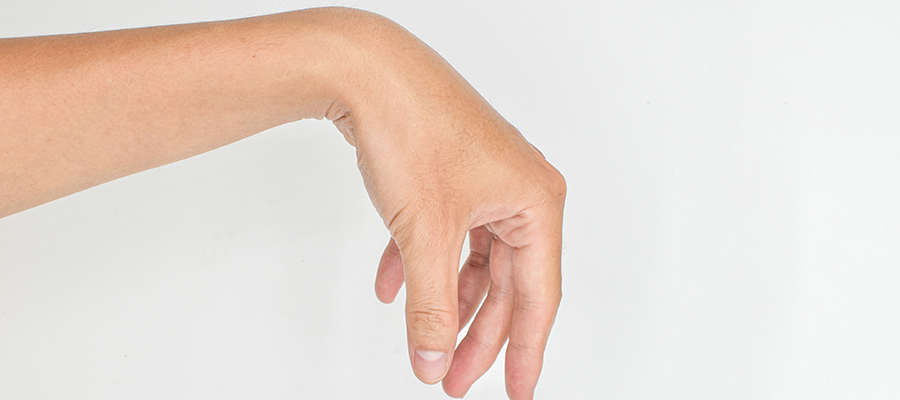
Nerves of the Upper Limb
The three major nerves, the radial nerve, median nerve, and the ulnar nerve innervate, or supply, the upper limb with sensation and function.
The radial nerve innervates the posterior upper arm and forearm and enables the extension of the wrist, elbow, and metacarpophalangeal (MCP) joints. The median and ulnar nerves work together to innervate the anterior forearm and the hand, allowing pronation of the forearm and wrist and finger flexion.
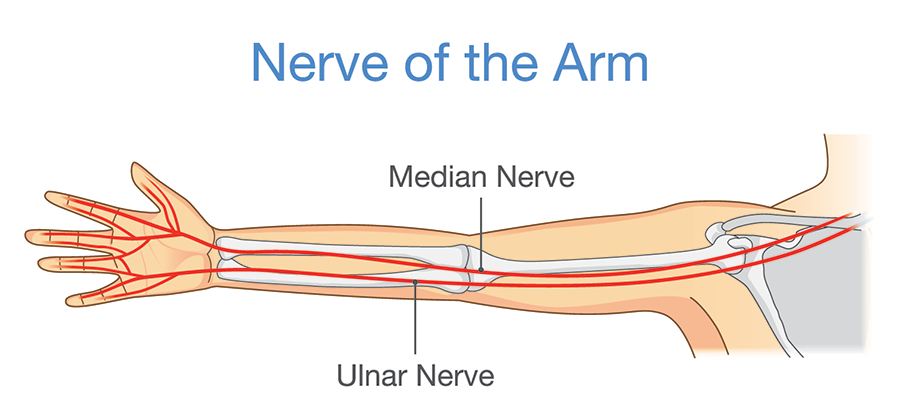
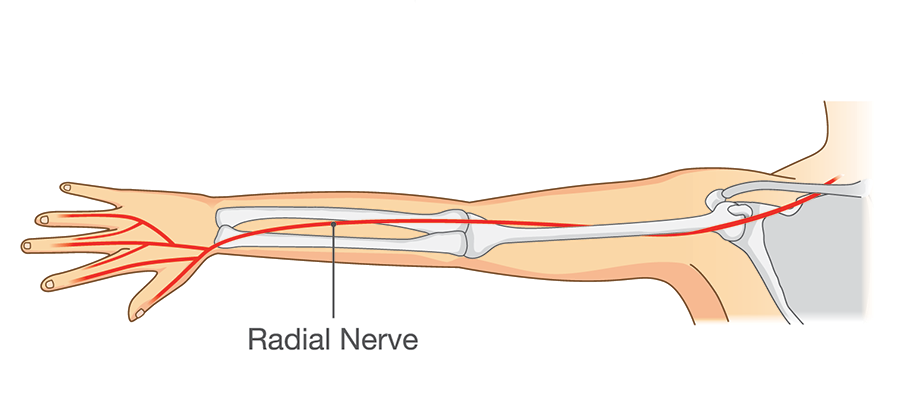
Is Something Getting on Your Nerves?
Nerve issues that affect the upper limb, known as upper extremity peripheral nerve syndromes, can vary widely. They range from mild carpal tunnel syndrome to severe brachial plexopathy. Patients may present with pain, sensory loss, and weakness as well as limited mobility in the hand, arm, or shoulder.
Types of Nerve Issues That Affect the Upper Limb
Ulnar and median nerve issues may present as a hand of benediction or claw hand, with sensory loss and weakness in the fingers. Saturday night palsy is a radial nerve palsy which limits the extension of the wrist and fingers.
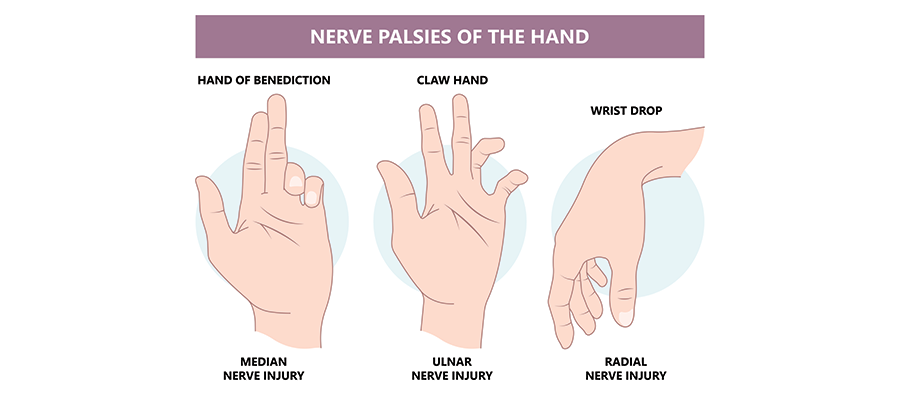
Radial Nerve Palsy, a form of Neuropraxia
Saturday night palsy is a radial nerve palsy. It is a form of neuropraxia which is a mild form of traumatic peripheral nerve injury.
AKA Saturday Night Palsy, Crutch Palsy, or Honeymoon Palsy
Radial nerve palsy is also known as Saturday night palsy, crutch palsy, and honeymoon palsy. Each of these radial nerve palsies has similar presentations, although their aetiology may be different.
Typical Causes of Saturday Night Palsy
Saturday night palsy is the result of prolonged compressive damage to the radial nerve. Falling asleep while intoxicated may reduce the reflexive ability to correct the sleeping position. Sleeping on a hard surface or with an arm hanging over a chair may lead to compression of the radial nerve in the axilla. The modality of crutch palsy, another form of radial nerve palsy, is caused by compression of the radial nerve due to improper use of crutches. Honeymoon palsy, similarly, is where another person falls asleep on the arm of the individual and consequently compresses the radial nerve. Other causes of radial nerve palsy include compressive clothing and prolonged use of a blood pressure cuff.
Posture-induced radial neuropathy.
Saturday night palsy is caused by the compression of the radial nerve due to the patient’s posture. This is combined with a person’s limited ability to correct the posture. Therefore, Saturday night palsy is a radial nerve palsy that is a posture-induced radial neuropathy.
Symptoms and Differential Diagnosis of Saturday Night Palsy
Falling asleep in a position that impinges the radial nerve may lead to Saturday night palsy. The patient may have a wrist drop, loss of finger extension, and the inability to sign a ‘thumbs up’. There may also be weakness and muscle control issues from the triceps to the fingers. Extension of wrist and finger is limited with numbness and loss of pinching and grasping strength.
Clinical symptoms of radial neuropathy have similar presentations to stroke or herniated disk. This makes diagnosing Saturday night palsy challenging. It also may lead to unnecessary investigations.
Traumatic causes can also lead to radial nerve compromise. For this reason, an investigation into the history and events leading up to the nerve issues are taken into consideration.
A physical examination is performed to evaluate weakness, numbness and other symptoms of the hand and arm. For a definitive diagnosis, treatment, and monitoring, further diagnostic procedures may include electromyography (EMG) which measures the electrical activity along a nerve. Imaging studies and nerve conductions studies may also be performed. These can help differentiate between types of nerve issues.
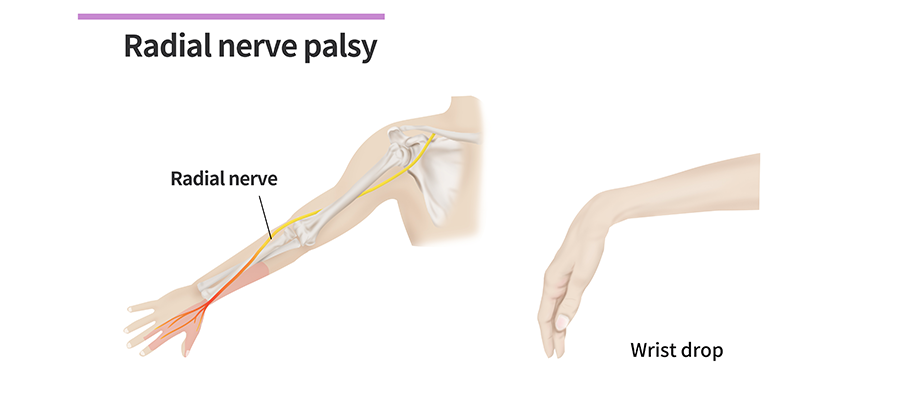
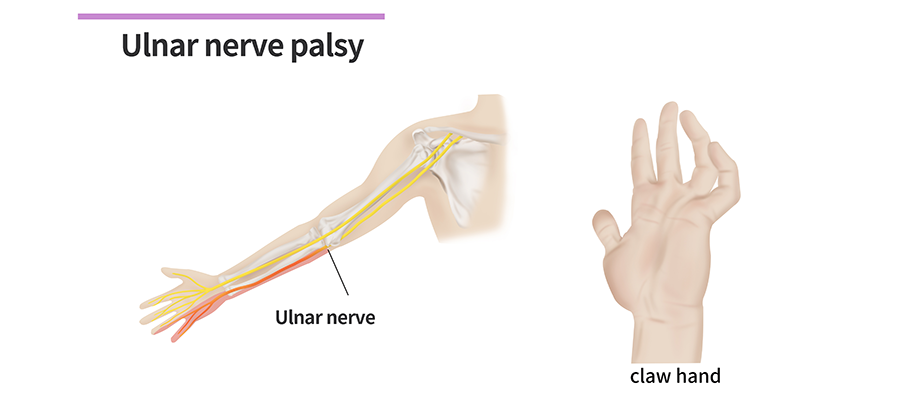
When to See a Doctor
If you suspect you may have a nerve injury, speak to our hand care team at CHARMS. They will help you find out if you have Saturday night palsy or another peripheral nerve syndrome. It is time to talk to your doctor if you have pain, sensory loss, or weakness as well as limited mobility in the hand, arm, or shoulder.

Nonsurgical Treatment Options
Saturday night palsy and other radial nerve palsies may be treated non-surgically with medication, physical therapy, or splinting.
Surgical Options
Moderate to severe nerve damage may require surgical intervention.
Tendon Transfer Surgery
Tendon transfer surgery has very good patient outcomes. It entails moving a working muscle and tendon from one area to replace a non-working muscle and tendon in an injured area. The forearm and hand have over forty different muscles. Some of these perform redundant functions, making them good choices to use in tendon transfer surgery.
A tendon transfer operation for radial nerve palsy is a common surgery with good functional results. Patients experience functional improvement to the affected hand with significant benefits on hand performance and the ability to return to work.
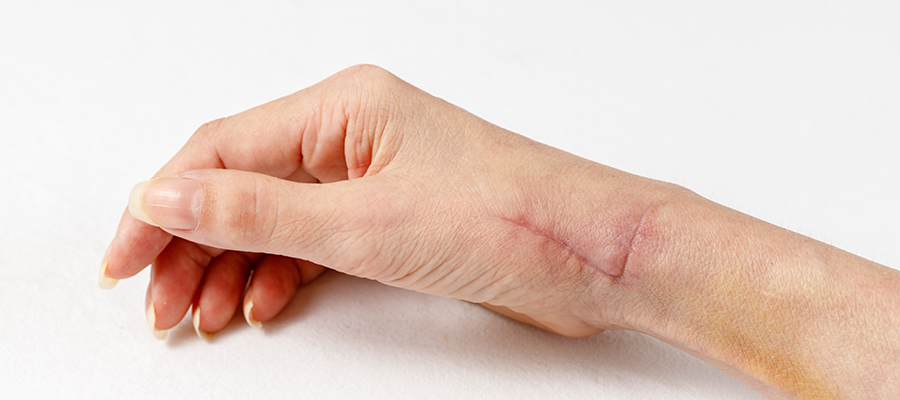
Saturday Night Palsy Prognosis and Recovery
The extent of the injury in relation to the force and duration of nerve compression will help determine the prognosis of Saturday night palsy. Mild damage is a form of neuropraxia with transient conduction block without degeneration of the nerves and usually results in a full recovery. Moderate damage may have delayed or incomplete recovery. Severe nerve damage will often need surgical intervention. Recovery takes time and even mild cases resolve in 2 to 4 months.

Wrap Up
Saturday night palsy occurs from prolonged, direct pressure on the axilla or armpit. It is a radial nerve palsy which presents as motor and sensory deficits. Diagnosis, treatment options, and therapeutic plans are needed for optimised recovery.
At CHARMS, we offer specialized treatment for simple to complicated hand conditions such as Saturday night palsy. Our hand care team provides extensive knowledge and experience for disorders of nerves and muscles requiring microsurgical expertise. At CHARMS, we endeavour to provide the highest level of service and care to ensure your visit with us is a pleasant one.